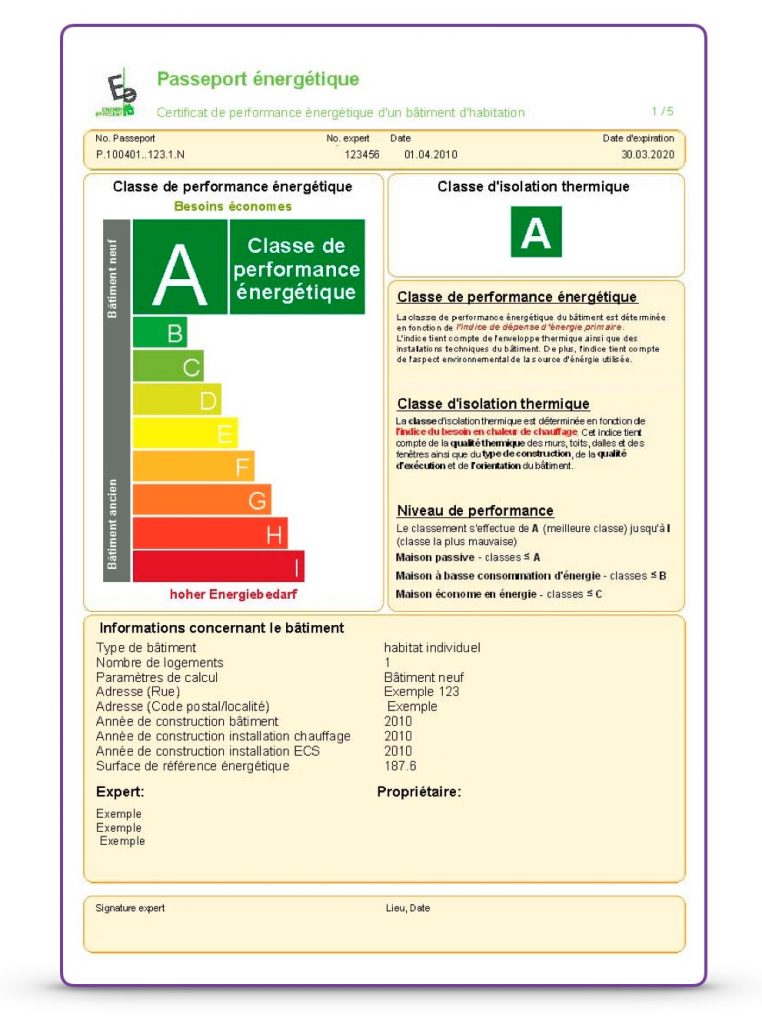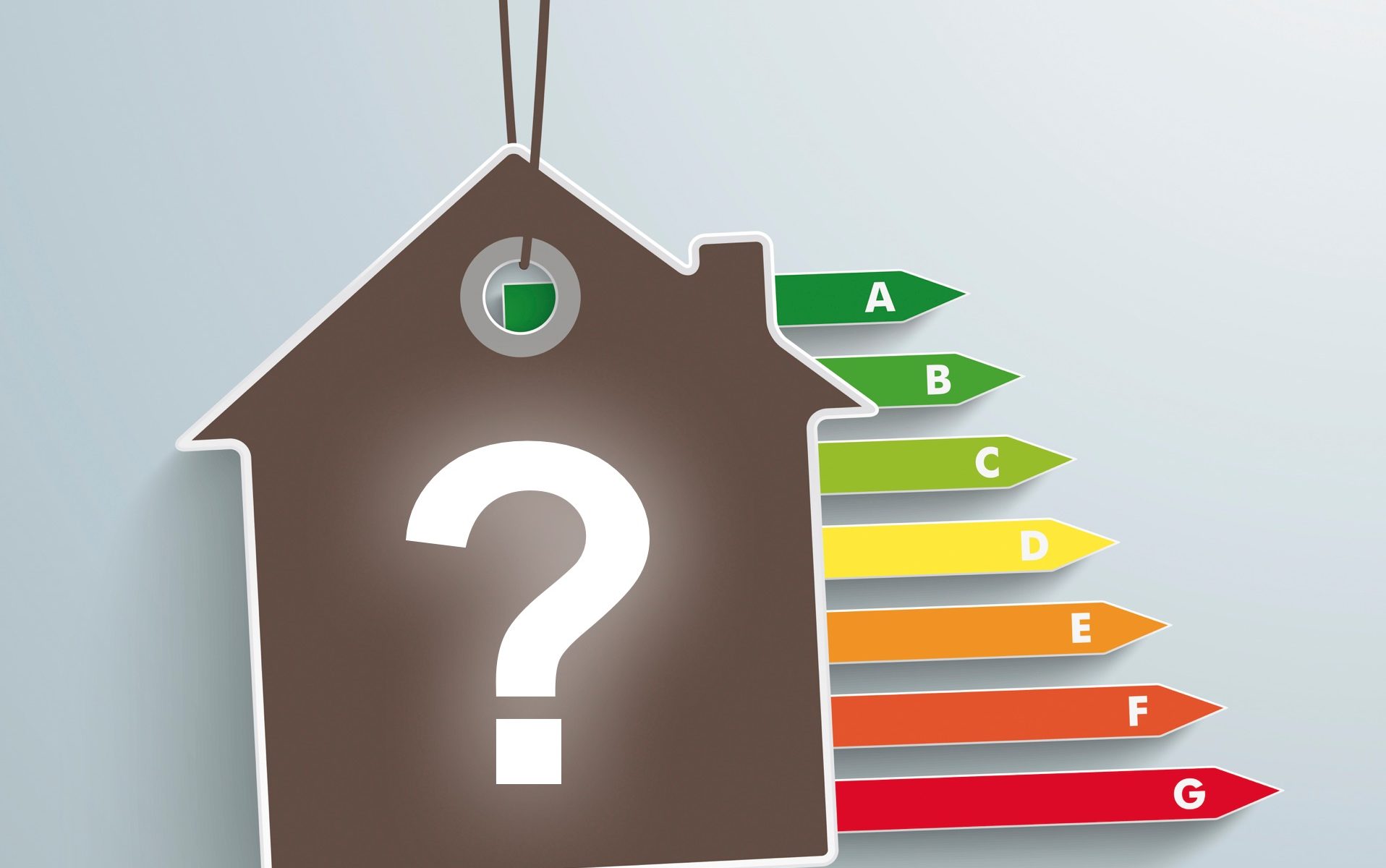Understanding the energy passport
Compulsory since 2007 for any new construction, renovation, sale or rental of real estate, the energy passport (energiepass) is a certificate that defines the energetic performance of a building. But how to establish one and understand it? Find out with this energetic answer from an expert.*
Initially, the energy passport (EP) was introduced to meet the new European Union requirements. The basic principle is to inform and raise awareness among individuals about the energy consumption of buildings and to encourage owners to invest in renovation and energy efficiency improvements.
The energy passport is a qualitative label allowing you to easily compare the energetic performance of different buildings. It provides information on the energy consumption of a dwelling, its thermal insulation, and its CO2 emissions. All this data allows you to compare different properties easily and without needing to be an expert in the field.
That being said, Luxembourg has chosen to go even further than the European requirements. Since 2017, the construction of new houses or apartments must have almost zero energy consumption (NZEB: Nearly Zero Energy Building), meaning it must meet the strictest class, called “triple A.” In practical terms, this ensures that any new construction is either a “passive” dwelling or one with very low energy consumption.
But let’s return to our passport and see what impact this has for you who wish to sell, buy, or rent a dwelling.
When should you establish an energy passport?
The passport is a legal obligation. It is important to know the situations in which it must imperatively be established:
-
- for any new construction benefiting from a building permit;
- in case of extension of an existing building;
- in case of change of owner or tenant, if the building does not yet have a passport;
- in case of modification with a building permit or substantial transformation (without a building permit) impacting the building’s energy performance and if the improvement concerns more than 10% of the surface of the modified element (external walls, windows, etc.);
- in case of work on technical installations (ventilation, heating system, etc.), if these modifications exceed €1,500 for a single-family house or €3,000 for a multi-family house.
Good to know: the EP is not mandatory in the following situations: if the sale is made with the intention of demolishing the building, as part of an inheritance or donation, in the case of a public sale by covered means, real estate seizure or public auction.
Once established, the passport is valid for a duration of 10 years.
When you are in the process of selling, it is often a smart idea to establish a new passport, even if you already have a valid document. If you have made some changes to the property in the meantime (double-glazing, new heater etc.), you may benefit from a better rating which will increase your sale potential. Once established, the passport is valid for a duration of 10 years.
It should be noted that the passport is valid on the whole building. This means that for an apartment block, each individual apartment does not require one. When needed, simply ask your syndic to hand you a valid original copy of the passport.
What does the process involve?
The EP can be established either by an architect or a consulting engineer who is a member of the Order of Architects and Consulting Engineers (OAI), or by an expert approved by the Ministry of Economy.
The costs associated with its establishment are, depending on the situation, borne by the owner, the condominium association, or, in the case of a new construction, the developer.
Many companies are present on the market, with various pricing policies and services. Some even have complementary services (thermal bridge detection, insulation damage identification, structural control of the building etc.). Don’t hesitate to request multiple quotes, but always make sure that these companies are certified. This ensures the conformity of the delivered passport.
Don’t hesitate to request multiple quotes, but always make sure that these companies are certified. This ensures the conformity of the delivered passport.
A certain amount of information will need to be communicated to the selected company: location of the building, year of construction, etc. Additional documents may also be requested from you: feasibility study (new construction), invoices or statements of thermal energy consumption (existing building), level and facade plans, construction details and heating, hot water, ventilation, photovoltaic installations, etc. To save time, consider gathering these elements before your appointment.
Once the company has all the documents and has finished recording different on-site measurements, it will take up to a week to receive the final result.

Understanding the result
The energy passport offers three main classifications. The energy performance class, which is calculated based on the energy needs of the building, using calculation rules determined by law. The result is expressed using a letter classification system, comparable to electronic devices, ranging from A+ (the best performance) to I.
The passport also determines the thermal insulation class. Also expressed via the letter system, this result only considers the heating heat requirements. Here, the quality of the building envelope is taken into account: walls, ceilings, windows, and roof.
Finally, the third category is the environmental performance class, which determines the CO2 emissions of the housing.
Other information such as details of energy consumption or recommendations for energy optimization measures (and their estimated costs) are also available on the certificate.
Good to know: Regardless of the class obtained, the issuance of an energy passport does not oblige you to carry out energy renovation work. However, since July 2012, it has been mandatory to indicate the first two classes (energy efficiency and thermal insulation) in real estate sale and rental advertisements.
There you go, now you know everything. All the best!
* Content translated from French by the BIL GPT AI tool


 Mortgage
Mortgage Personal loan
Personal loan Savings
Savings